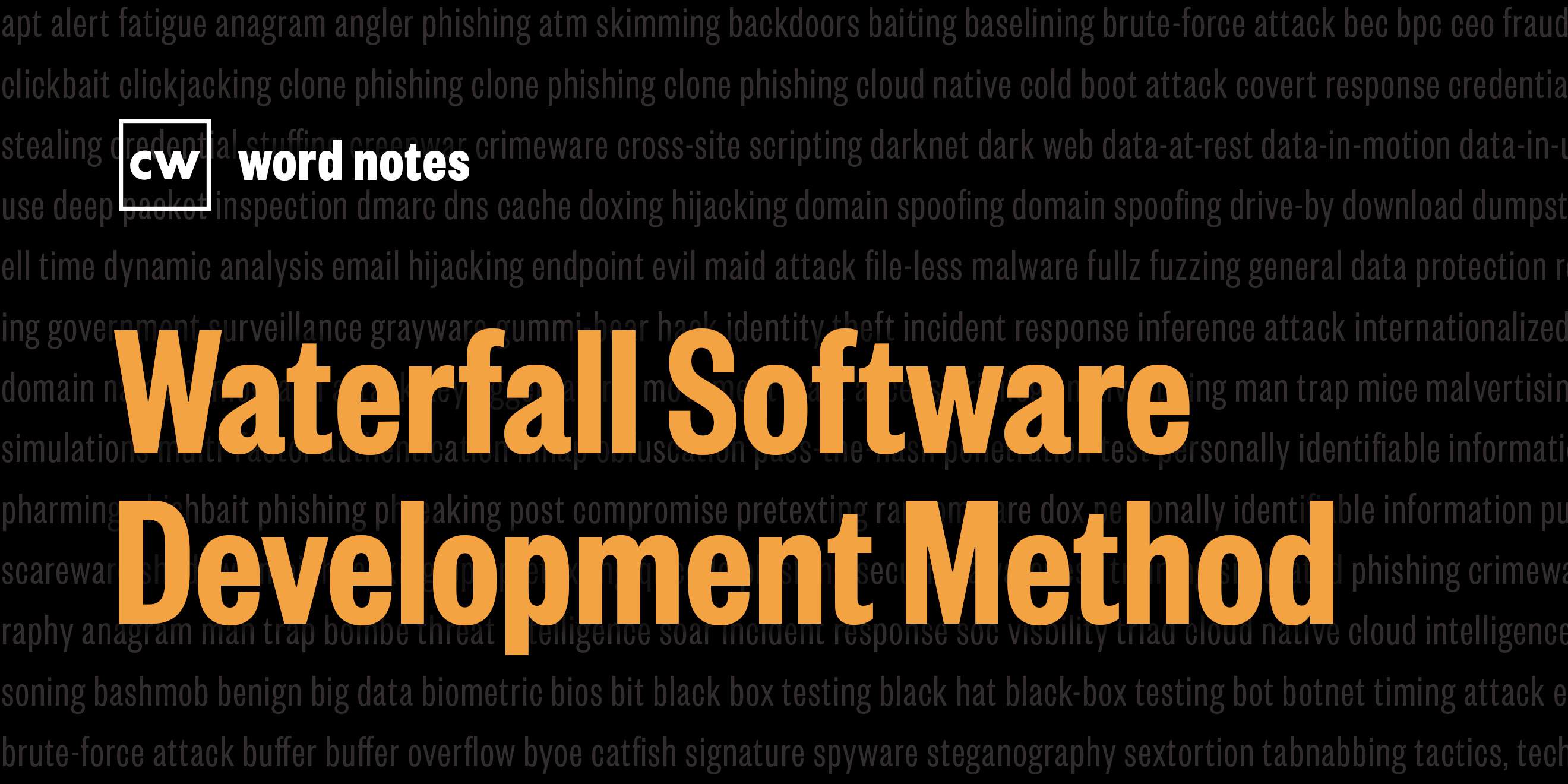
Waterfall Software Development Method (noun)
Rick Howard: The word is: Waterfall Software Development Method.
Rick Howard: Spelled: Waterfall, as in a cascade, Software, as in program designed to perform well-defined functions, Development, as in an act of progress, and method, as in a particular procedure for finishing some tasks.
Rick Howard: Definition: A software development model that relies on a series of sequential steps that flow into each other, like a series of waterfalls.
Rick Howard: Example sentence: Some gaming studios still use the Waterfall Software Development Model to develop modern computer games.
Rick Howard: Origin and context: Herbert Bennington presented the first iteration of the Waterfall model in 1956, although he did an initially get credit. That honor went to Dr. Winston Royce, who wrote a criticism of the model, but didn't name it in 1970. In this criticism, he included a well-designed graphic representation of the model that looked like a waterfall. Later that decade, 1976 T.E. Bell and T.A. Thayer coined the Waterfall method referring to Royce's diagrams. Royce's paper laid out several phases of a project: system and software requirements, analysis, design, implementation, testing, and operations.
Rick Howard: Under the waterfall model, each phase of the project must be completed before the next phase begins. Royce criticized this approach because testing occurs at the end of the project. Royce stated "The testing phase which occurs at the end of the development cycle is the first event for which timing, storage, input/output transfers, etc., are experienced and distinguished from analyzed.
Rick Howard: These phenomena are not precisely analyzable. They are not the solutions to the standard partial differential equations of mathematical physics for instance. Yet if these phenomena failed to satisfy the various external constraints, then invariably a major redesign is required." Despite these concerns, the US Department of Defense began requiring contractors to use the Waterfall model for their projects in 1985. This resulted in very slow development of government software products for over a decade and spawned the Agile development model in the early 2000's.
Rick Howard: Nerd reference: In 2014, Sara Verrilli taught the MIT Open Course Ware class titled, "Creating Video Games." She covered the Agile Software Development model and explained that Agile was a direct reaction to the Waterfall Method because it was so slow.
Sara Verrilli: How do you manage to plan what you're going to need to do? Get all of your resources in order, have them all in the right place at the right time and get them working together. The old model of doing this, which is actually the model that I worked at in several studios, and I've seen several other studios that use it, and it doesn't work very well, but the model that things started with in the industry and grew from is waterfall, and I want to talk about that because it's where some studios still are and it's where a lot of software projects still are. And so it's good to understand what the history of project management is so you understand some of the problems that were found in that model, that the agile model is trying to fix.
Sara Verrilli: Agile has its own problems and we'll talk about them, but let's start with waterfall. So the very traditional tool, is waterfall where you prepare for every stage, you sort of finished every stage, a hundred percent, and then you move on to the next stage to see what happens.
Rick Howard: Word Notes is written by Tim Nodar, executive produced by Peter Kilpe, and edited by John Petrik and me, Rick Howard. The mix, sound design, and original music have all been crafted by the ridiculously talented Elliott Peltzman. Thanks for listening.

